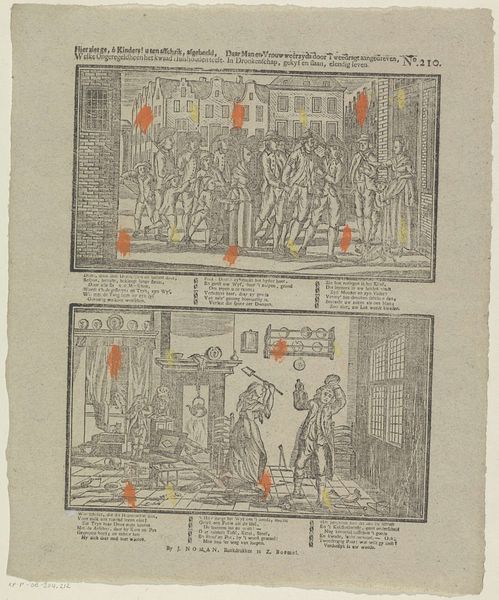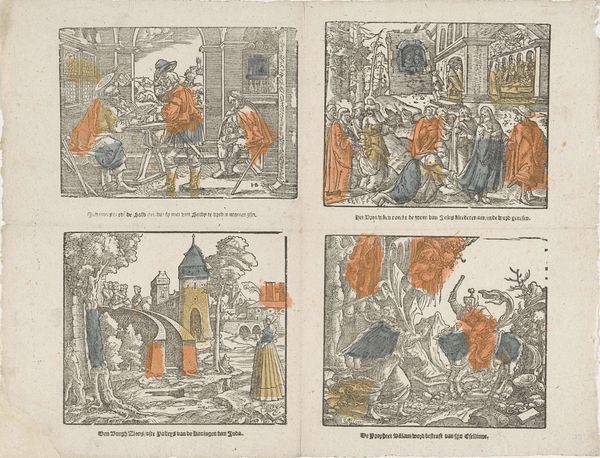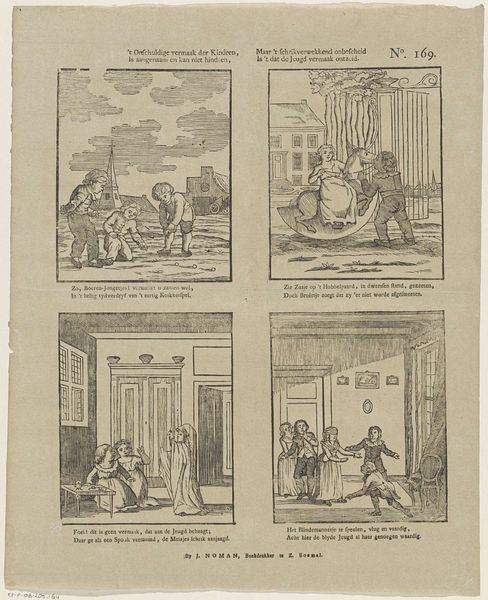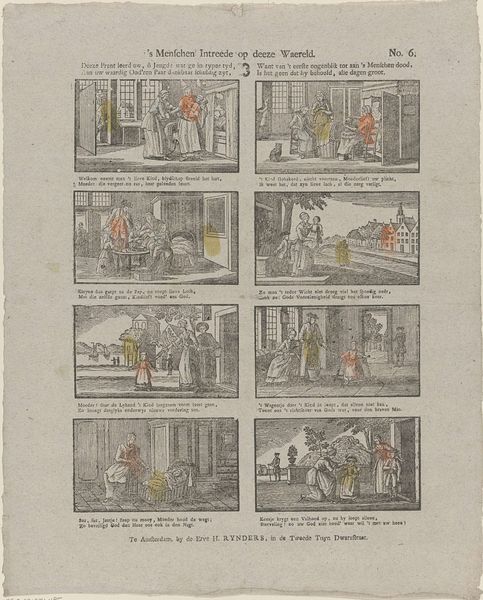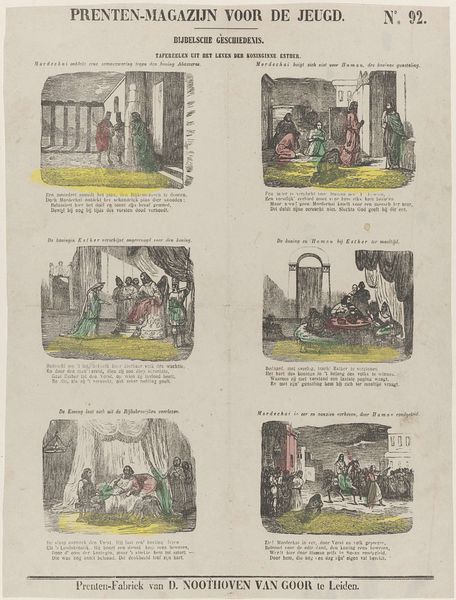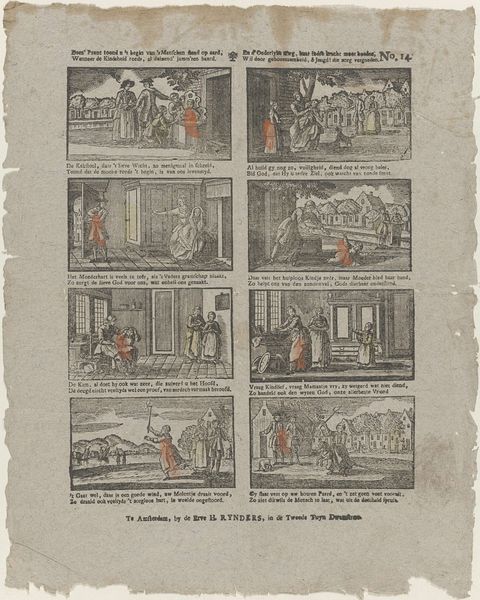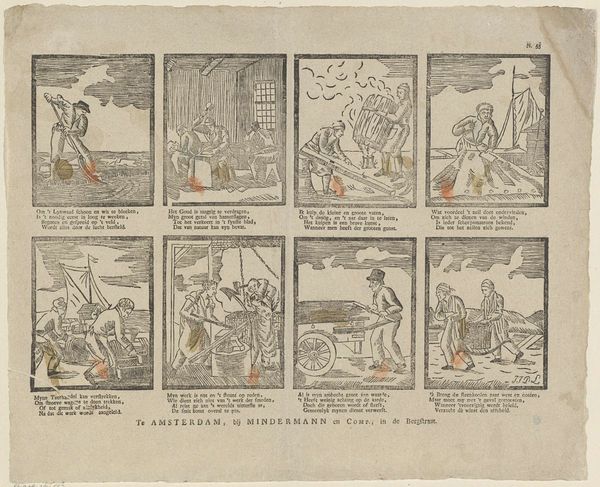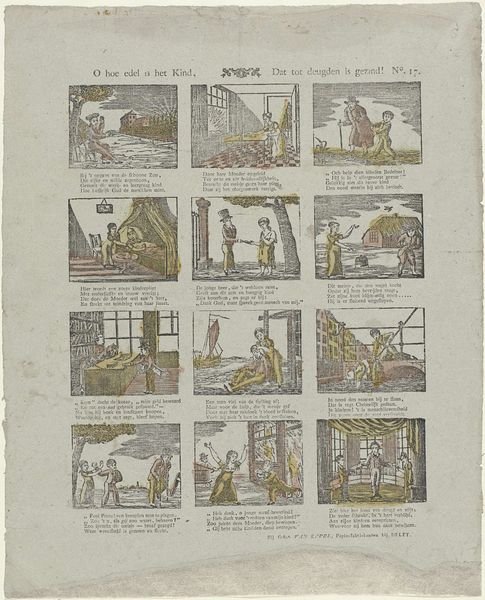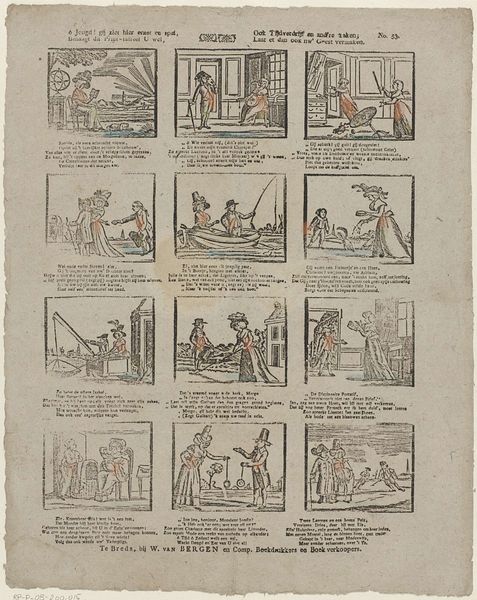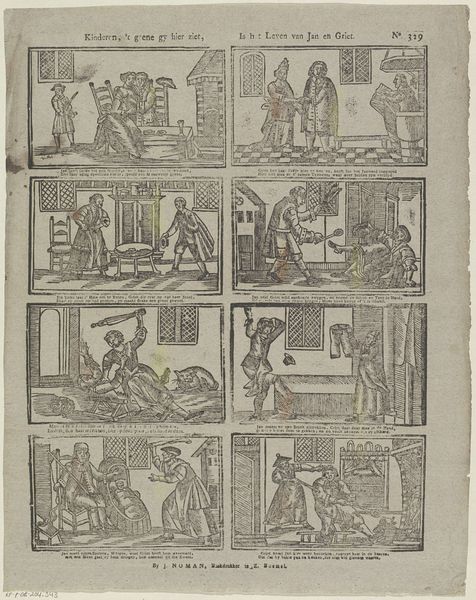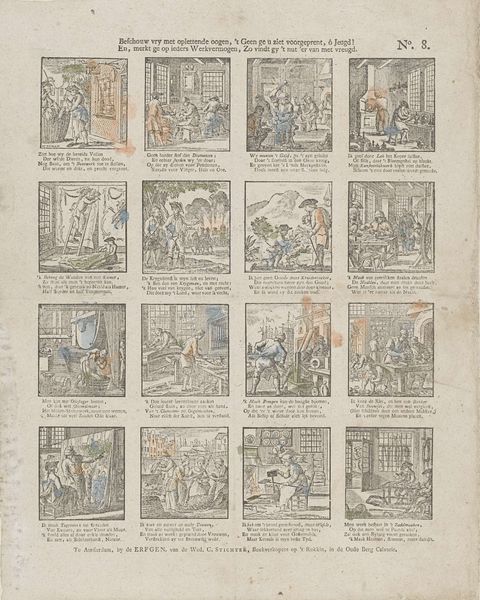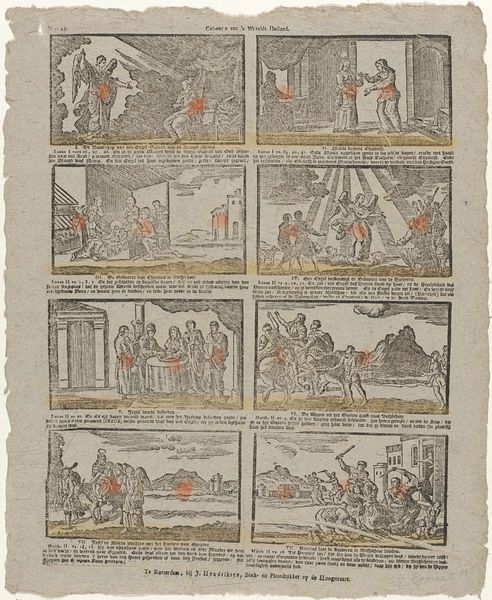
Elk leeft hier vroolyk en verblyd. Doch 't is slegts voor een korten tyd 1791 - 1812
0:00
0:00
print, etching
#
dutch-golden-age
# print
#
etching
#
caricature
#
genre-painting
Dimensions: height 422 mm, width 334 mm
Copyright: Rijks Museum: Open Domain
Curator: This etching before us, dating from around 1791 to 1812, is titled "Elk leeft hier vroolyk en verblyd. Doch 't is slegts voor een korten tyd," by Jacobus Thompson. The print seems to offer us a slice of 18th-century Dutch life. Editor: It has this rather unsettling juxtaposition—moments of what looks like drunken revelry shown with graphic depictions of people marked with bloody cuts and contusions, almost as if the "good life" and something gruesome were one and the same. Curator: Exactly, and it is important to read the work as a moralizing statement against the pitfalls of intemperance. The iconography points to the brevity of earthly pleasures and the potential for self-destruction when indulging without restraint. Look closely and you'll see several scenes with figures drinking, fighting, and collapsing. Editor: Right, I pick up on the warnings against indulgence—you can't escape the inherent power imbalances within this social tableau, not just within the brothel context but even among companions enjoying "leisure." How much are certain parties exploiting and feeding off the lack of regulation? Curator: I agree. We see a cultural obsession and anxiety around societal imbalance, class divisions, vice, and morality, yet rendered within a distinctly accessible visual language. Each character performs a familiar role, adding a narrative dimension. Notice, too, the repeated placement of blood. Editor: And the inclusion of dogs... a reference to faithfulness betrayed? It's all here! Perhaps even a sense of unease around how public and domestic spaces bleed into one another, and how dangerous or even life-threatening this lack of social cohesion is. Curator: Indeed. And Thompson effectively utilizes the graphic style of caricature to amplify his didactic message and to make a statement. This all serves to expose hypocrisy in that era’s common wisdoms about daily life and pleasure. Editor: These layers of meaning embedded in the print spark a broader discussion. They tell us not only about Dutch Golden Age culture but about systems that persist today—systems of access, equity, health, public trust... Curator: Absolutely, and those systems still are very much dependent on visual reminders such as these that speak so clearly of virtue and its costs.
Comments
No comments
Be the first to comment and join the conversation on the ultimate creative platform.
